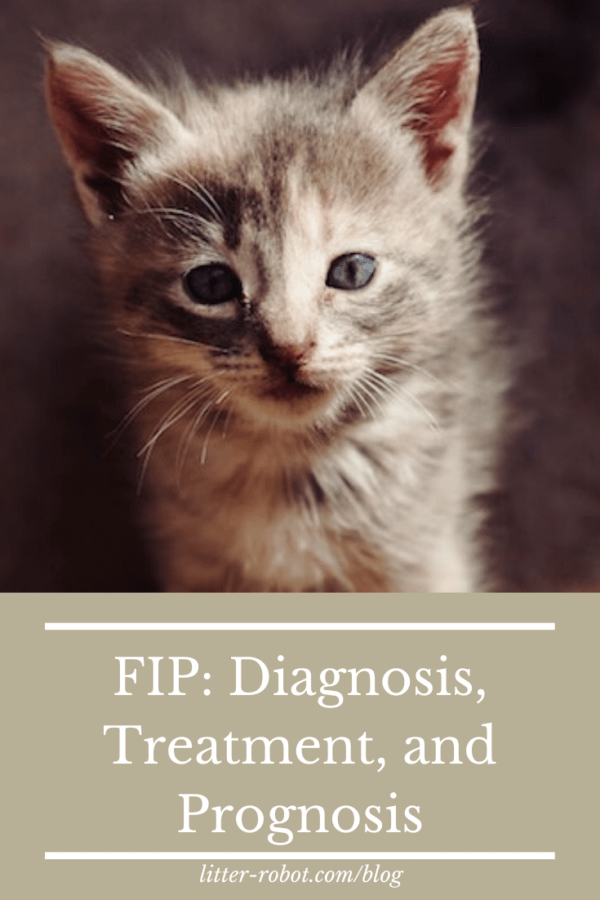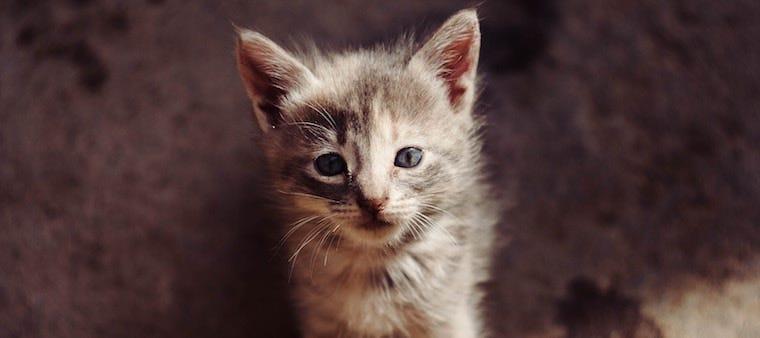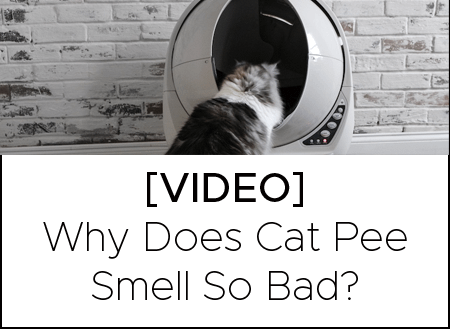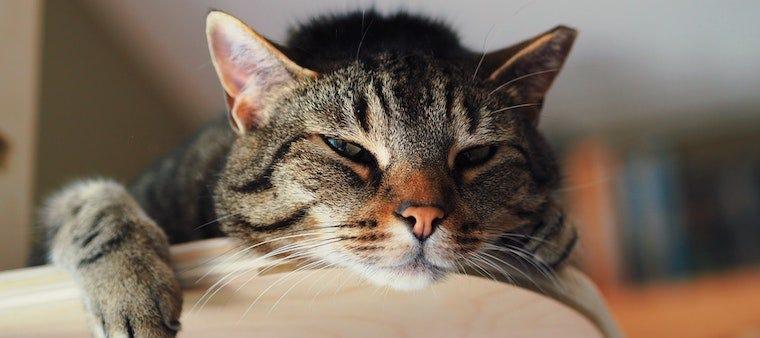Last month, we discussed my most hated feline disease, feline infectious peritonitis (FIP). In part one of this topic, I discussed what FIP is, what causes it, and what clinical signs your cat may show from it. So, make sure to read that post first.
In today’s post, we’ll review how your veterinarian may go about diagnosing FIP and what specific tests need to be done. (Unfortunately, there’s no one test that can easily diagnose FIP.) We’ll also review treatment for FIP. Sadly, there is very little treatment available for this fatal virus. And until a “cure” can be discovered, the prognosis is very poor for FIP. However, there are potential research updates that may give us some hope, so keep reading!
How do we diagnose FIP?
Feline infectious peritonitis is difficult to diagnose, as there’s no one simple blood test that is 100% accurate. Routine blood tests that your veterinarian commonly runs—such as a complete blood count and biochemistry panel—don’t necessarily diagnose FIP. However, certain findings can be seen that make the diagnosis of FIP more likely. This may include abnormal white blood cell counts: The total number of white blood cells are often elevated (e.g., leukocytosis), but one particular type of white blood cell called a lymphocyte can be very low (e.g., lymphopenia). A mild anemia may be seen from chronic illness.
To me, the most “classic” blood test seen consistent with FIP includes a very elevated total protein (TP) and elevated globulin (a specific protein level). A serum protein electrophoresis can be performed to separate the different types of proteins found (e.g., polyclonal versus monoclonal) to help rule out other diseases (such as multiple myeloma, a form of cancer-like disease).
Fluid analysis
There are two forms of FIP: dry and wet. With the wet form of FIP, an abnormal amount of fluid may be seen in the abdomen, causing a pot-bellied appearance. Your veterinarian should perform a sterile abdominocentesis (e.g., a belly tap) to remove this fluid. Once this fluid is removed, the fluid should be physically examined and submitted for fluid analysis. With FIP, the abdominal fluid typically is straw-colored, slightly thick and sticky, and very high in protein.
Antibody tests
Unfortunately, there is no FIP virus-specific test. More advanced FIP tests include antibody tests, which measure the presence of coronavirus antibodies or virus detection assays. However, these tests aren’t 100% accurate and can’t tell the difference between benign feline coronavirus (FCoV) and the deadly Feline Infectious Peritonitis Virus (FIPV) mutation. Antibody tests measure the immune response to coronavirus. If your cat tests positive for coronavirus antibodies, it doesn’t necessarily mean he or she definitely has FIP—it just means that your cat was exposed to coronavirus at some point in their life, was exposed to a large amount of coronavirus, or was recently exposed.
That said, high antibody titers are consistent with a diagnosis of FIP. Some studies have shown that cats with signs consistent with FIP and very high titers (1:1600) had a 94% chance (positive predictive value) of FIP. Cats with very high titers are also more likely to shed FCoV. If your cat comes back with a low antibody titer, it means there’s a small amount of antibodies to coronavirus; this means that your cat was exposed to coronavirus at some point or a long time ago. That said, some cats with FIP can still have low antibody titers or be negative; this may be seen in end-stage disease or if there is a very high virus load and it is binding up the body’s antibody. Sadly, these tests can be very confusing for both veterinarians and pet parents to interpret.
7b protein test
There is another test that looks specifically for antibodies against a “7b protein” found on the FIP coronavirus. This test also is not 100%, and can be positive in cats with coronavirus. A few other different FIP tests include ELISA, IFA, or a polymerase chain reaction (PCR) test, but again, these only detect coronavirus—they don’t differentiate from the deadly FIPV well.
Virus detection
Virus detection of coronavirus can also be performed, but this is nonspecific. One test (e.g., a real-time PCR assay) measures the level of viral mRNA in immune cells of cats, but this test is still not confirmatory for FIP 100%. If a cat has high viral loads in the blood, then it is highly suggestive of FIP, especially in the end stage. However, high viral loads in the blood are also found in healthy cats.
Tissue samples
The best way to diagnose FIP is based on obtaining a tissue sample (e.g., biopsies) for histopathology or immunohistochemistry. If biopsies are done, the tissue can be submitted for immunoperoxidase testing, which looks for the virus itself. Biopsy results usually show “pyogranulomatous” lesions—in other words, a certain type of mixed inflammation of cells (such as neutrophils, lymphocytes, plasma cells, macrophages, etc.). Immunohistochemistry can test for the viral antigen itself or the nucleic acid.
PCR test
The last test that can be done is looking for coronavirus in the feces using a PCR test. Typically, multiple samples need to be taken over a period of time to see if the virus is shedding. The general recommendation is to test 2-3 samples collected at a monthly interval (e.g., 3 samples daily, followed by another 3 samples daily, one month later). Unfortunately, this test has limitations also.
So, of all the testing, biopsies are the best test. But biopsies are more invasive, as they require tissue removed by surgery or under anesthesia with a biopsy device. Ultimately, your veterinarian or veterinary specialist will need to confirm diagnosis of FIP based on your cat’s history, clinical signs, evaluation of fluid, biopsy results, supporting laboratory tests, and a positive coronavirus antibody titer. Unfortunately, autopsy is also the most positive way to diagnose and confirm FIP.
How can I prevent my cat from getting FIP?
There’s no good way to prevent FIP. While there is one licensed FIP intranasal vaccine available (Primucell™ FIP by Pfizer/Zoetis), it is rarely given and is not very effective at preventing FIP. It generally isn’t recommended by the American Association of Feline Practitioners Feline Vaccine Advisory Panel. First, this vaccine isn’t licensed to give until the kitten is greater than 16 weeks of age, and most kittens in a multi-cat environment (such as catteries or shelters) may have already been exposed to coronavirus by then. Secondly, once a cat is vaccinated for FIP (which is rarely done), it will result in your cat testing positive for antibodies to coronavirus from now on, making future tests even harder to interpret.
Quarantine new cats
In multi-cat households, it’s important to minimize exposure to coronavirus and FIP. When acquiring a new cat, he or she should be quarantined if possible for a short period of time until a veterinary exam and testing can be done (e.g., for feline leukemia, FIV, and FIP). Litter boxes should be disinfected prior to bringing a new cat into a household. Litter boxes should also be cleaned and disinfected frequently (at least quarterly). Avoid overcrowding of cats, and make sure cats are on routine preventative health care with your veterinarian. Finally, make sure your cats have an annual examination and vaccines at your veterinarian.
If you have multiple cats, it’s best to keep them as healthy as possible by quarantining new cats when they come into the household. Make sure to adopt or purchase your cat from a reputable breeder who doesn’t have a history of having cats diagnosed with FIP.
My cat was just diagnosed with FIP. Is there a treatment?
Unfortunately, there’s no effective treatment for FIP… yet. As FIP is usually 100% fatal, treatment is supportive and symptomatic. It may include fluids to help hydrate, appetite stimulants (e.g., mirtazapine, Entyce™), and drugs to reduce the inflammatory response in the body (e.g., prednisolone), cytotoxic drugs (e.g., cyclophosphamide, interferon), and antibiotics (for secondary infections, if needed). Additional care should be aimed at treating the symptoms. This includes draining the fluid from the abdomen and chest, blood transfusions, a temporary feeding tube for nutrition, and more.
But is there hope?
Currently, there is research to investigate a new anti-viral drug called GS-441524 against FIP. This was just published in the Journal of Feline Medicine and Surgery, and brings hope to this formerly fatal disease. With GS-441524, some cats have been out of treatment for over 1.5 years and are still healthy. Another previous anti-viral drug called GC376 was also shown to be effective. (This was developed by virologists at Kansas State University and tested at UC Davis.)
So, how do these anti-virals work? They both inhibit the replication of the FIP virus in two different ways. GS-441524 is an adenosine nucleoside analog, which means it prevents RNA from forming correctly and the molecules in the body from creating the viral protein. That’s different from GC 376 (Anivive Lifesciences), a protease inhibitor; this is an enzyme that cuts out proteins and prevents progeny viruses from being produced. Unfortunately, these drugs aren’t readily available or FDA-approved yet.
Another treatment, a polyprenyl immunostimulant, is under investigation (with studies done at the University of Tennessee). This drug affects the immune system by upregulating mRNA expression of T helper lymphocytes, which help with the body’s ability to respond to inflammation.
What’s the prognosis for FIP?
Sadly, FIP is currently almost 100% fatal. The diagnosis and treatment of FIP is poor. In one study of 43 cats that were confirmed to have FIP, the average survival after diagnosis was only 9 days. A few cats in this study lived for a few months. If your cat’s quality of life is poor, if your cat has a large amount of fluid in the body, or if your cat has certain blood work changes (such as a low platelet count, high bilirubin blood level, or low lymphocyte count), the prognosis is very poor. Cats that seizure, or show no improvement within 3 days of treatment, also have a poor prognosis. Humane euthanasia may be necessary.
I wish I had better news about FIP. By the time I see it in the ER, I’m often counseling cat owners on euthanasia. That said, please know that these newer drugs will hopefully yield a cure within the next few years!
When in doubt, talk to your veterinarian about new treatment options. Consider a referral to a board-certified veterinary specialist for further diagnosis and treatment options. There’s also some great information at the Cornell Feline Health Center.
References:
- Pedersen NC, Kim Y, Liu H, et al. Efficacy of a 3C-like protease inhibitor in treating various forms of acquired Feline Infectious Peritonitis. J Feline Med Surg 2018;20(4):378-392.
- Pedersen NC, Perron M, Bannasch M, et al. Efficacy and safety of the nucleoside analog GS-441524 for treatment of cats with naturally occurring Feline Infectious Peritonitis. J Feline Med Surg 2019;21(4):271-281.
- Legendre AM, Kuritz T, Galyon G, et al. Polyprenyl immunostimulant treatment of cats with presumptive non-effusive Feline Infectious Peritonitis in a field study. Front Vet Sci 2017;4:7.
Cover photo by Pedro Vergara on Unsplash









